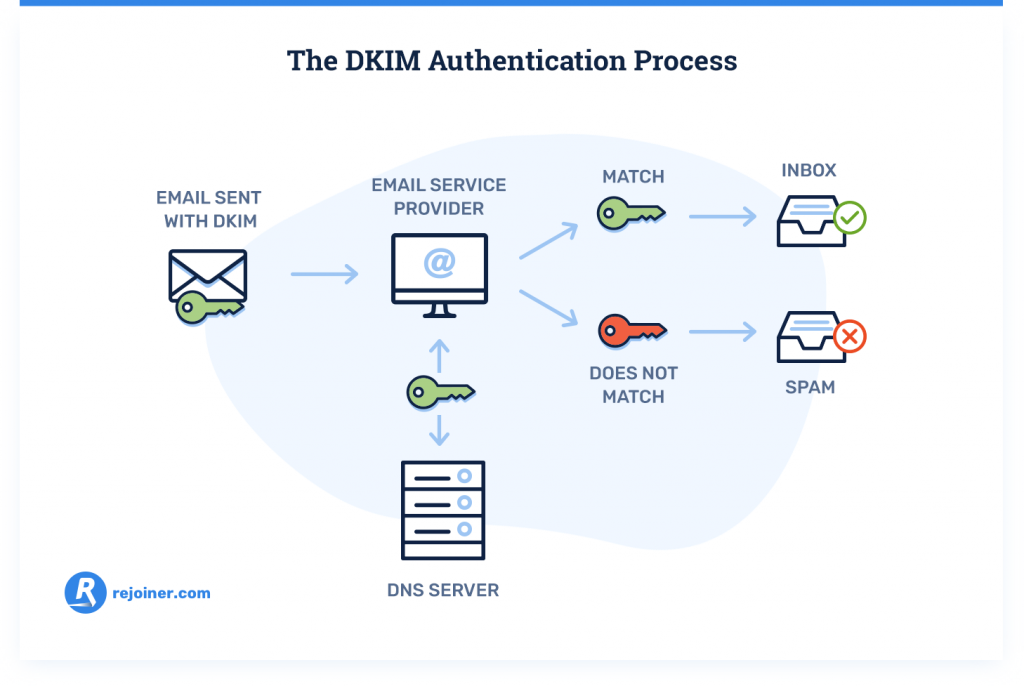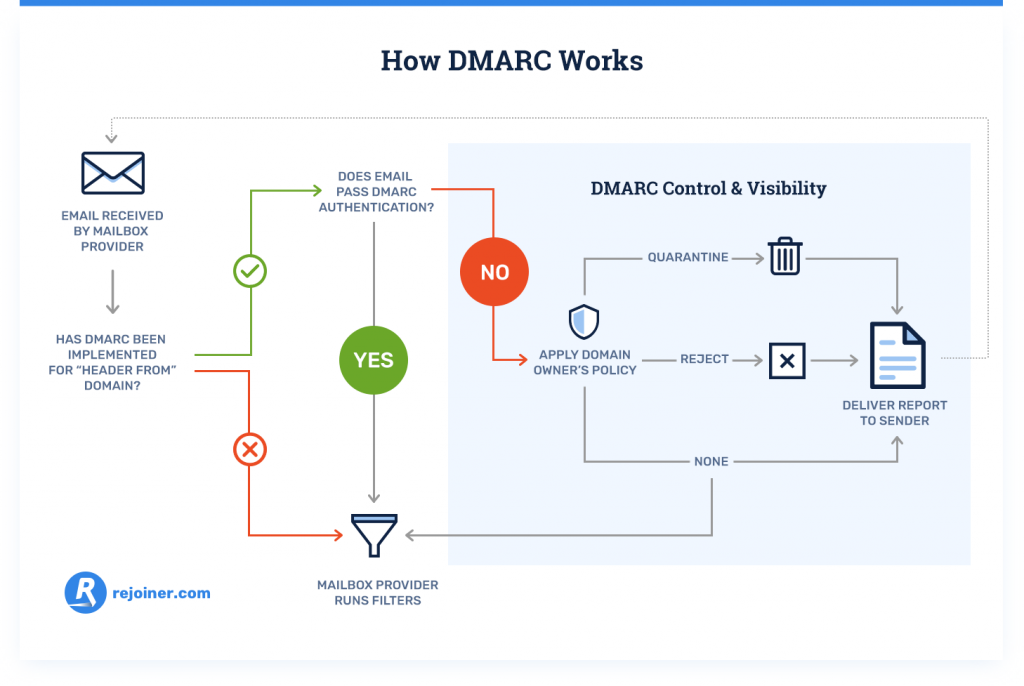Email Authentication
We highly recommend setting up email authentication protocols for your own sending domain, but this is not a requirement to send emails with Rejoiner.
Choosing a Subdomain
We recommend sending promotional emails from a subdomain authenticated with SPF, DKIM, and MX records.
The subdomain you choose is up to you, but we normally suggest e.yourbrand.com or em.youbrand.com.
Your Records
To access email authentication DNS records for your Rejoiner sending domain, click Settings, then click the Delivery tab.
Here you will find TXT records for SPF, DKIM, and MX:

Sender Policy Framework (SPF)
A Sender Policy Framework (SPF) record is a DNS record that identifies third-party mail servers that you have authorized to send email on behalf of your domain. In the eyes of a receiving email server (Gmail, Yahoo, Hotmail, etc.), an SPF record is a signal that you've given us permission to send an email using your domain in the emails From: address. Without SPF authentication, your emails may get rejected because they look like they’re from an unauthorized sender address.

Configuring SPF
Since Rejoiner is sending emails on behalf of your domain, setting up a SPF record will tell email recipients that you've authorized us to do so. An increase in deliverability results is an increase in conversion for your remarketing campaigns.
SPF records should be added to your site's DNS as a TXT record. To authorize Rejoiner's mail servers to send email on your behalf, the record should look like:
v=spf1 include:rejoiner.com ~allYou may already have an existing SPF record. If so, you should update the record to include Rejoiner:
include:rejoiner.comDomainkeys Identified Mail (DKIM)

DomainKeys Identified Mail (DKIM) provides a unique public key that pairs with a private key to verify that an email is not forged or altered. Without a DKIM signature, your emails are susceptible to man-in-the-middle attacks where a bad actor changes your email while it’s en route to the recipient.
Your DKIM signature will look like this:
k=rsa; t=s; p=MIGfMA0GCSqGSIb3DQEBAQUAA4GNADCBiQKBgQDGMjj8MVaESl30KSPYdLaEreSYzvOVh15u9YKAmTLgk1ecr4BCRq3Vkg3Xa2QrEQWbIvQj9FNqBYOr3XIczzU8gkK5Kh42P4C3DgNiBvlNNk2BlA5ITN/EvVAn/ImjoGq5IrcO+hAj2iSAozYTEpJAKe0NTrj49CIkj5JI6ibyJwIDAQABMail Exchange (MX)
An MX record specifies the mail server responsible for accepting email messages on behalf of a domain name.
If your MX record doesn’t point to the SMTP server you are sending the email from, it is highly likely that your email will be filtered as spam by email receivers.
Domain Message Authentication Reporting and Conformance (DMARC)
Please reach out to us if you would like assistance setting up a DMARC policy for your organization.
Domain Message Authentication Reporting and Conformance (DMARC) creates policies for handling email messages that fail SPF or DKIM authentication, and messages that are missing one or both of those authentication standards. DMARC gives you more control over your email authentication system and makes your SPF and DKIM standards more effective.

Updated 2 months ago
